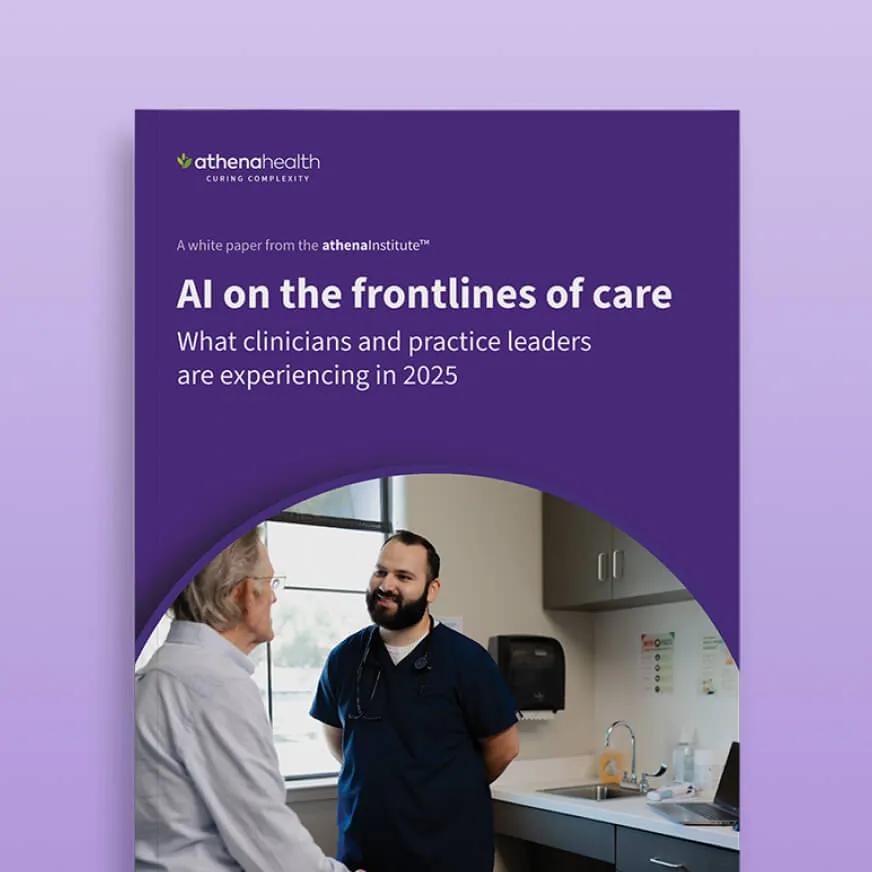Resource Center
All ContentBlogCase StudiesCustomer Success StoriesebooksWebinars
- athenahealth
- December 04, 2025
- 5 min read
Make providing personalized care simpler with our AI-native EHR.
Submit cleaner claims faster with less work with AI-native RCM software and services.
Improve patient experience with AI-native and self-service tools.
Improve patient outcomes while tracking and getting paid for care.
AI-powered tools that help drive efficiency and performance.
Get the data you need when you need it from across our network.
A model that ensures your success is our primary focus.
In-person training and live support that empowers you from day one.
Technology that helps improve patient outcomes and reduce costs.
Expert consulting and support to help improve performance and ROI.
Easily connect to athenaOne and extend its capabilities.
Tailor your athenahealth experience with industry-leading partners.
Enterprise RCM software that maximizes collections with less work.












Learn how AI tools can help improve patient loyalty and outcomes.